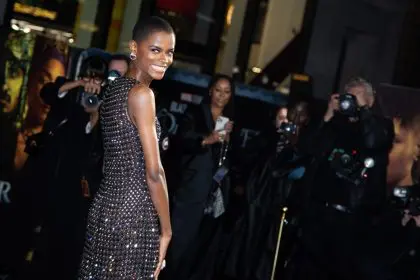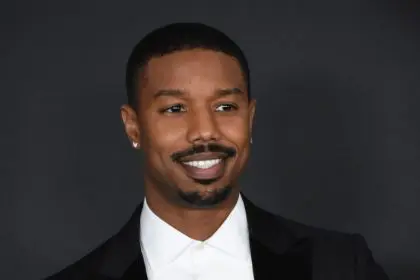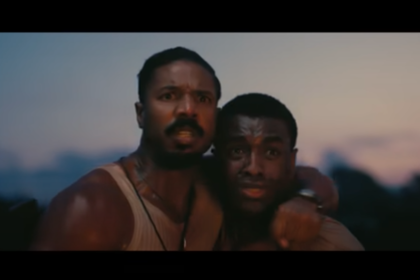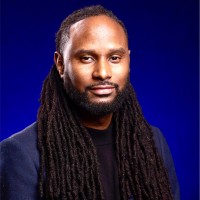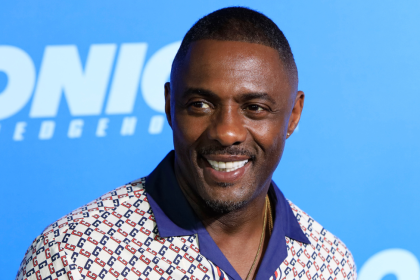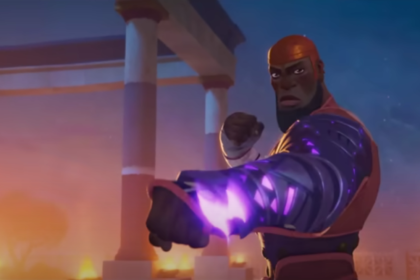Creed revolves around a sport, but it’s more than a film about boxing. The film, which stars Michael B. Jordan, Tessa Thompson and is directed by Ryan Coogler, is an extension of Sylvester Stallone’s Rocky franchise. But beyond boxing, the film delves into high incarceration rates of young Black males, fatherhood, and remaining triumphant whether you win or lose.
For Jordan and Coogler, Creed represents their second film together after the award-winning Fruitvale Station. Thompson continues to make a name for herself after starring in the critically acclaimed, Dear White People.
Jordan, Thompson and Coogler recently sat down with rolling out to discuss Creed, Philadelphia culture, and creating engaging stories in the era of the Black Lives Matter movement.
Ryan and Michael, you both were a part of the magnificent Fruitvale Station. How did you both connect with Sylvester Stallone for Creed?
Ryan: It came about from me. I was kind of raised up to be a Rocky fan and I was big into movies. The movies were kind of like a surrogate for the relationship I had with my father. And when I was finishing up film school and about to make Fruitvale Station, my dad got real sick. To vent from the mental stress, I came up with this idea with something similar happening to the hero. So I came up with the idea for the movie and I mentioned it to my agents. They represent Sylvester Stallone as well so they introduced me to his agents and I pitched the idea to them and pitched Mike as the lead character. This is all before we actually shot Fruitvale Station.
For you Michael, how were you able to build on Sylvester’s original story as the lead actor?
Michael: I think we approach it as an individual film. I don’t think we really looked at it as trying to push any legacy forward. We used characters that were established 40 years ago by Sly, but we wanted to make a standalone film about this boxer. This young man who had a lot of identity issues trying to figure out who he was as an individual. Never knowing who his father was, but living in this world where everybody did and having that shadow cast over him. Seeing that journey of him trying to figure out who he is and finding that father figure in Rocky and how that odd couple came together and formed that relationship.
Tessa for your character, being a musician and knowing that the musician was deaf, how did you prepare for that role?
Tessa: There were two separate ideas. In the film, my character [Bianca] says she’s gonna try to do what she loves for as long as she possibly can. So for me, they were kind of like separate things. I had to understand the disability and what that process is like. Luckily Ryan’s fiancé works in the deaf community so she was a resource for me. There was plenty to read about people’s experiences with hearing loss so that was one thing I did to understand that part of it. But the music was really separate. But the process of finding this artist’s voice in the space of two weeks was tricky. It was really challenging, but I love to do things that challenge me.
Let’s talk about Philly culture. When Sly filmed Rocky in the ‘70s, Philly was a different place from what it is today. How were you able to capture the essence of Philly throughout the film?
Michael: I’m from Jersey, my sister went to Temple University so I spent a lot of time in Philly. So you have to try really hard to keep slang such as “Yo” and “Son” at bay. But I think it worked. Once my character got to Philly and started hanging around Bianca, he started to be a bit more comfortable in his own skin on the east coast.
There is a scene where Michael’s character, Adonis, is running and had guys riding bikes by him. Was it the same play on Rocky’s victorious moment where he climbs the steps at the Philadelphia Museum of Art?
Ryan: No question. It was definitely like Adonis’s version of Rocky running, but the steps are kind of like a place that belongs to Rocky. It makes sense for Adonis being this new kind of champion and he’s the champion of a different part of Philly. His gym is in North Philly and he gets adopted by those people so it makes sense for his place to run would be his gym and that followed him ended up being these bikers from this neighborhood.
Michael, let’s talk about training. How long did you train and which boxers did you study?
Mike: For about 10 to 12 months, I did hardcore training. Weight lifting, boxing, and the diet is really important so I strip down my diet. Sugar’s, pasta, dairy, and bread were gone. It was a real strict diet and being consistent. You work out six times per week and, sometimes, two or three times per day and eating every two hours like clockwork. It was also important to surround myself with some of the best boxing minds such as Andre Ward, Amir Khan and their trainers. I went to Floyd Mayweather’s gym and kind of peeked in. As far as the professional fighters, we were trying to figure out what kind of style to give him and we decided on Timothy Bradley was the style closest to what Adonis would have been.
Ryan, we talked about this earlier as far as angles. A lot of people don’t know what it’s like to be in a ring and have somebody trying to kill you pretty much. From a director’s standpoint, how did you approach that and make sure the fight scenes were authentic?
Ryan: It’s a challenge with boxing because it’s a sport that translates to cinema so well and it’s been done so many times. If you could find a way, it always works and we wanted to make it feel different from other boxing movies, but at the same time not reinvent the wheel. We wanted each fight to have its own story, it’s own style and courage. After he was coached by Rocky, we wanted to up the intensity because right now you’re on the line. You have no more excuses. I think we tried to embrace the intimacy that we were filming the scenes previous to the boxing matches. We wanted to match that intimacy inside the ring and really give folks an inside seat.
Let’s talk about the opening scene which was very powerful. It takes viewers inside a juvenile facility. If we could talk about the school to prison pipeline we see it so often with young Black males that go to prison at an early age. How did that resonate with you as the bigger thing of young Black males getting locked up at an early age?
Mike: I think it’s definitely an issue with kids growing up without father figures in their lives and a stable home environment. That’s something Adonis didn’t have. He didn’t fit in anywhere. He spent time in a lot of poor places growing up and he was brought into this other community where he had privilege once he was adopted. It further created this identity issue that he had. And sometime the world and it’s surroundings doesn’t really support that ambition and hunger and drive for these kids. So for him, his outlet was the ring, fighting, emotionally that was his release. I think specific to the story, it opened up that longing for that family dynamic. It takes a village to raise a child and the people that are around him are pushing him forward.
Ryan: That scene was very much inspired by my dad and I. We worked at a juvenile hall together in San Francisco when I was 21. Some of the kids that were coming through, my dad would point to the ID and say, “I had his father 20 years ago.” You realize that it is a cycle that doesn’t exist in a vacuum. When you lock up a kid’s father, you’re almost writing that warrant that he’s gonna follow in his footsteps. He’s losing that father figure dynamic, for me Adonis is what happens when the kids get to escape. It’s a scar and an anger that Adonis takes with him that he had at an early age. It’s a lot of kids that if they had that opportunity, they could make something of themselves.
Tessa: It also speaks to the importance of mentorship of people in the community being able to recognize the strength in a child. I think because Adonis is in these homes where fighting is a problem, if he was in a different environment they would say “oh well he should take jujitsu.” And the whole course of his adult life, his formative years would have been different I think it becomes this really great metaphor for what happens when someone has the access to mentorship.


